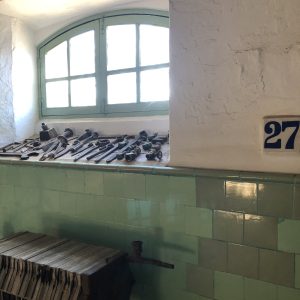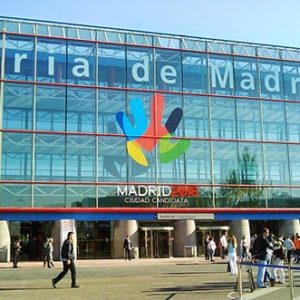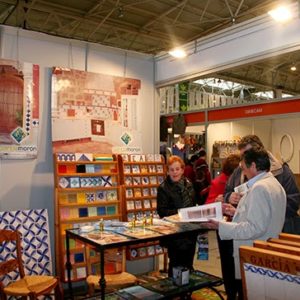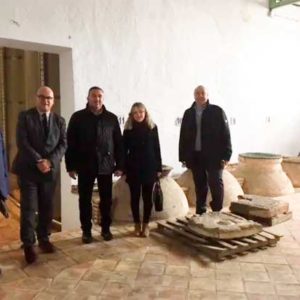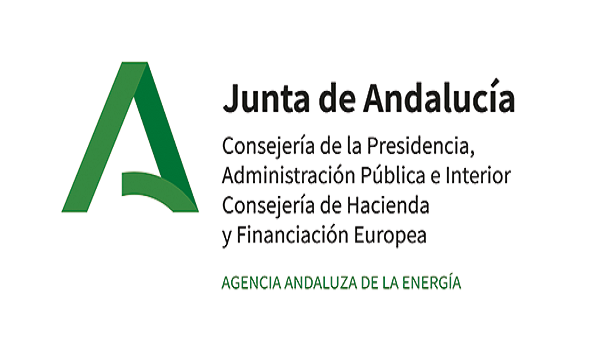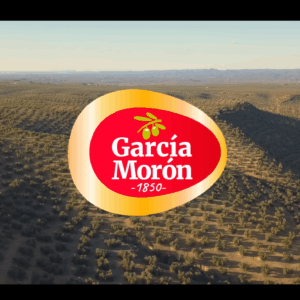
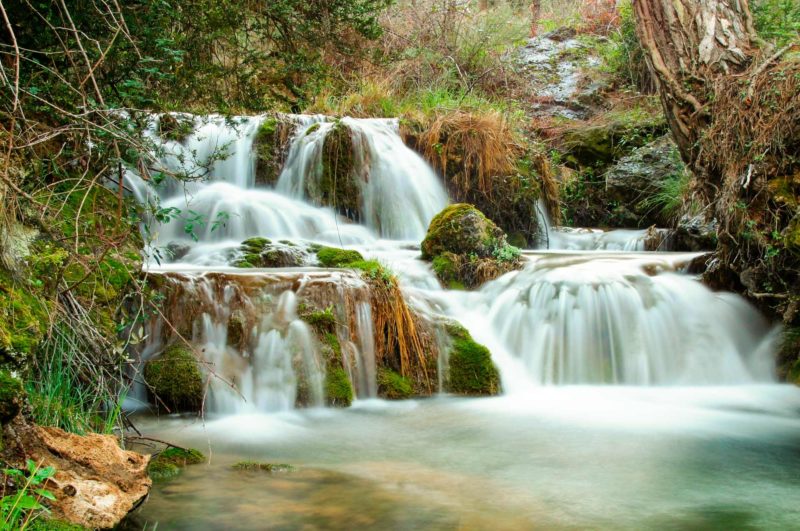
- Publicado el
Oleotourism in Parque Natural de Cazorla, Segura and Las Villas
THE ULTIMATE GOAL IS TO TURN THE MILL INTO A REFERENCE POINT FOR OLIVE OIL TOURISM
Understanding the production process of local products, and at the same time getting closer to the rural world of a specific area and to places with several centuries of history. These are new demands of the cultural tourist that the García Morón group aims to exploit through its latest project: the conversion of the oil factory into a museum dedicated to the dissemination of extra virgin olive oil and its qualities. An opportunity to promote the brand and, at the same time, offer the region new models of diversification and growth.
The García Morón group, located in the town of Arjonilla (Jaén) is a company with almost 170 years of history. It was founded in 1850 after the union of a group of Andalusian relatives who cultivated their own olive trees in the regions of Sierra Morena and Campiña Norte. In 1891 the company took a leap forward with the creation of the first mill, the first step towards the total professionalisation of the company, which at the beginning of the 20th century began to offer olive milling services to third parties for subsequent marketing, as recorded in the company’s records. The company continued to progress steadily but steadily. In the middle of the century they decided to expand their activities to include the extraction of olive pomace and, finally, in 1970 they launched bottles of oil under their own brand name. Growth continued and, well into the 21st century, they began their international expansion.
Today, García Morón employs an average of 70 people throughout the year, reaching up to 150 at harvest time. Its activities encompass the entire production process, from the harvesting and processing of the olive, in the picual and arbequina varieties, to the bottling and marketing of the virgin olive oil, as well as complementary activities such as, for example, a ceramics factory that uses the orujillo as fuel for its ovens.
A museum in the oil mill
Like García Morón, there are many olive oil mills with many decades and even several centuries of history. Companies, often of family origin, whose traditional values and artisanal working methods have been maintained as an added value of the product, although taking into account and taking advantage of technological advances and innovations in the sector. Although these singularities are usually highly appreciated by the consumer, especially in a world such as that of olive oil, the consumer often has no real idea of the work and philosophy behind the product that ends up in his or her hands.
How can we bring the user closer not only to the product, but also to the complex production process behind it? García Morón has a proposal in this regard. A proposal that has to do with the olive oil tourism experience and the attractions it presents for the user, and which, if it works, could become a future reference for other entrepreneurs in the sector: the creation of an olive oil museum in the mill itself. A space that would welcome visitors interested in learning about local products as part of their tourist experience, alternating this activity with the daily work of harvesting and processing that takes place in the facilities. Thus, the initial conception divides the available surface area of the mill into four rooms. The first is, logically, the reception area, the entrance to the museum. The visitor would then enter the first room and encounter a first, direct and interactive experience with the product: a tasting. The first room would be set up for oil tastings and other related events that would serve as an introduction to the visitor.
The route would continue through the second and third rooms, the first, an area of archaeological remains and historical information, and the second, dedicated to innovation and new methods of oil production. In both areas there would be different exhibitions which, logically, would follow a series of museological criteria in terms of dissemination and interpretation, i.e. offering quality and relevant information, based on previous studies and analyses, in an accessible and comprehensible way for all types of public. The visit would end in a shop where the company’s products would be on offer, so that if the tourist is satisfied with the visit, he or she can show his or her satisfaction by making a purchase.
Growth opportunity for the brand and the region
The company has already presented a preliminary project that sets out the objectives and analyses the advantages and disadvantages of such a project. The ultimate goal is to turn the mill into a point of reference for olive oil tourism, a must-see place on any tourist route and a regular venue for congresses, tastings, workshops, conferences and all kinds of professional events related to the olive oil sector. If achieved, this would not only be a step forward for the image of the company, for the dissemination of its brand and its products, but would also have a real and tangible impact on the economy of the area.
The influx that the museum would attract would boost tourism in the region, which would translate into more jobs, more income from the consumption of local products and more local tax revenues. If the impact is indeed positive, this could eventually lead to both an increase in public investment in infrastructure and a stimulus for tourism entrepreneurship. In the end, the idea is to offer a cultural and heritage attraction that adds value to the brand and, at the same time, gives the locality an opportunity to grow. As in any venture, there are costs to be assumed, those that would have to be dedicated to the tourist offer and the maintenance of the mill, as well as the more than possible distortion of the production process (due to the constant influx of people in the factory), just as possible threats, such as the eventual commodification of local cultural manifestations, must also be confronted and, if possible, counteracted.
Seduction as a promotional strategy
For the project to work, a good promotional design is necessary to attract as many people as possible, not only in the province, but also nationally and internationally. It is with this ambition in mind that García Morón proposes his dissemination and communication strategy, based on two pillars: to offer a quality experience and to generate a lively and constant programme of activities.
The first measures should be focused on obtaining the greatest possible visualisation, investing in signage, brochures, advertising through websites and in the creation of an attractive logo that is quickly and intuitively associated with the experience offered. A catalogue will also be created with the products that the visitor will be able to buy once inside the factory, at the end of the visit, when passing through the shop. In terms of visitor behaviour, emphasis will be placed on the quality of the experience, offering a customer service and a programme of guided tours adapted to each visitor.
THE PROJECT AIMS TO ATTRACT RURAL TOURISM, PROMOTE EXPERIENCES AND GENERATE ECONOMIC IMPACT IN THE REGION
educational groups, associations, companies and individuals, and making access as easy as possible for all kinds of groups, with special attention to people with disabilities, the elderly and children. The visit should be comfortable and pleasant, with rest areas and exhibition texts that alternate specific information with more curious or eye-catching information and with images that capture the visitor’s attention and make the reading flow. In the end, the aim is to offer a unique experience that seduces tourists, not only so that they will consider investing in the product, but also so that they will recommend the experience to their acquaintances and, thus, word of mouth will help to attract new visitors.
The other part of the promotion strategy has to do with the celebrations that the mill will hold on an ongoing basis: tastings, congresses, conferences, activities, in short, more focused on professionals in the world of oil, who will eventually identify the mill as a centre of reference for establishing relations with other professionals in the sector. Giving an impact to these activities also helps potential tourists to be more likely to take notice of the museum’s offer and be encouraged to visit.
Continuing to promote olive oil tourism
Spain is the world’s leading producer of olive oil, a crop which, however, accounts for barely 5% of the world market in vegetable fats. For this reason, olive oil tourism is an opportunity to explain the true meaning of olive oil and, furthermore, to create a new channel for economic diversification in rural areas, which will help those who work in agriculture to recover the income levels they have been losing over the years. Proposals such as this will become increasingly common as tourists discover the new added value that the world of olive oil can bring to their ethno-tourist demand.
